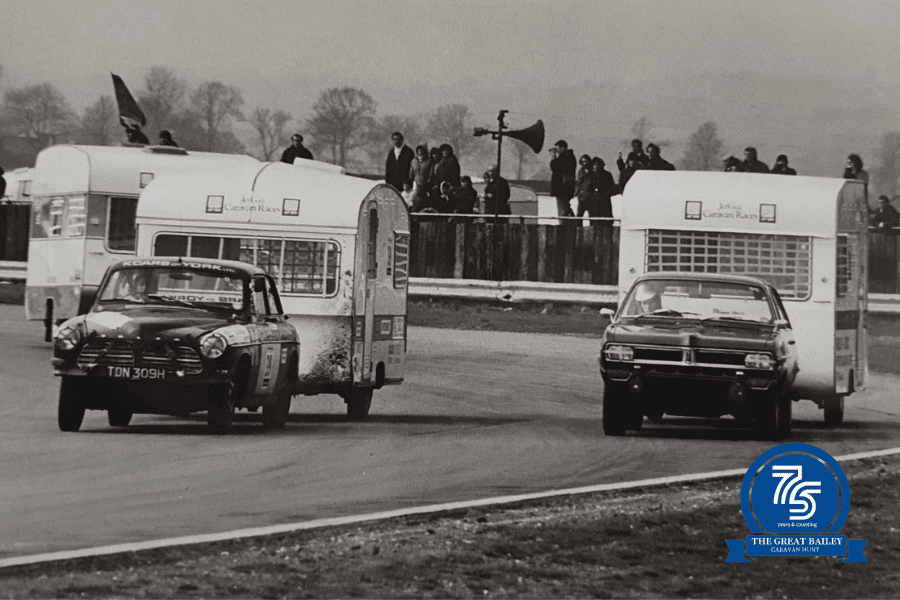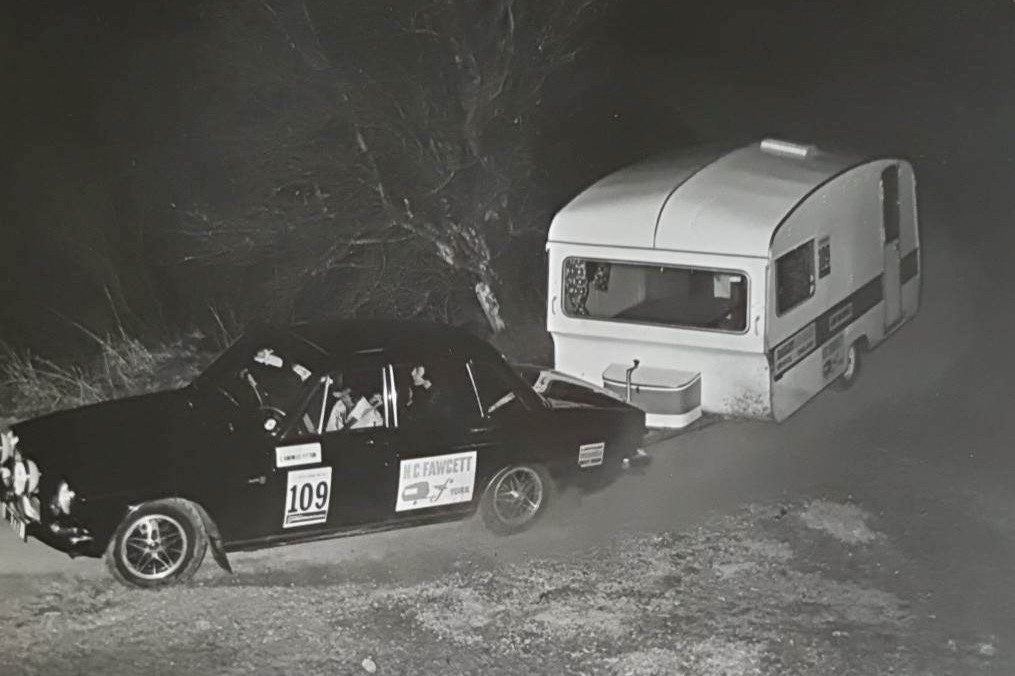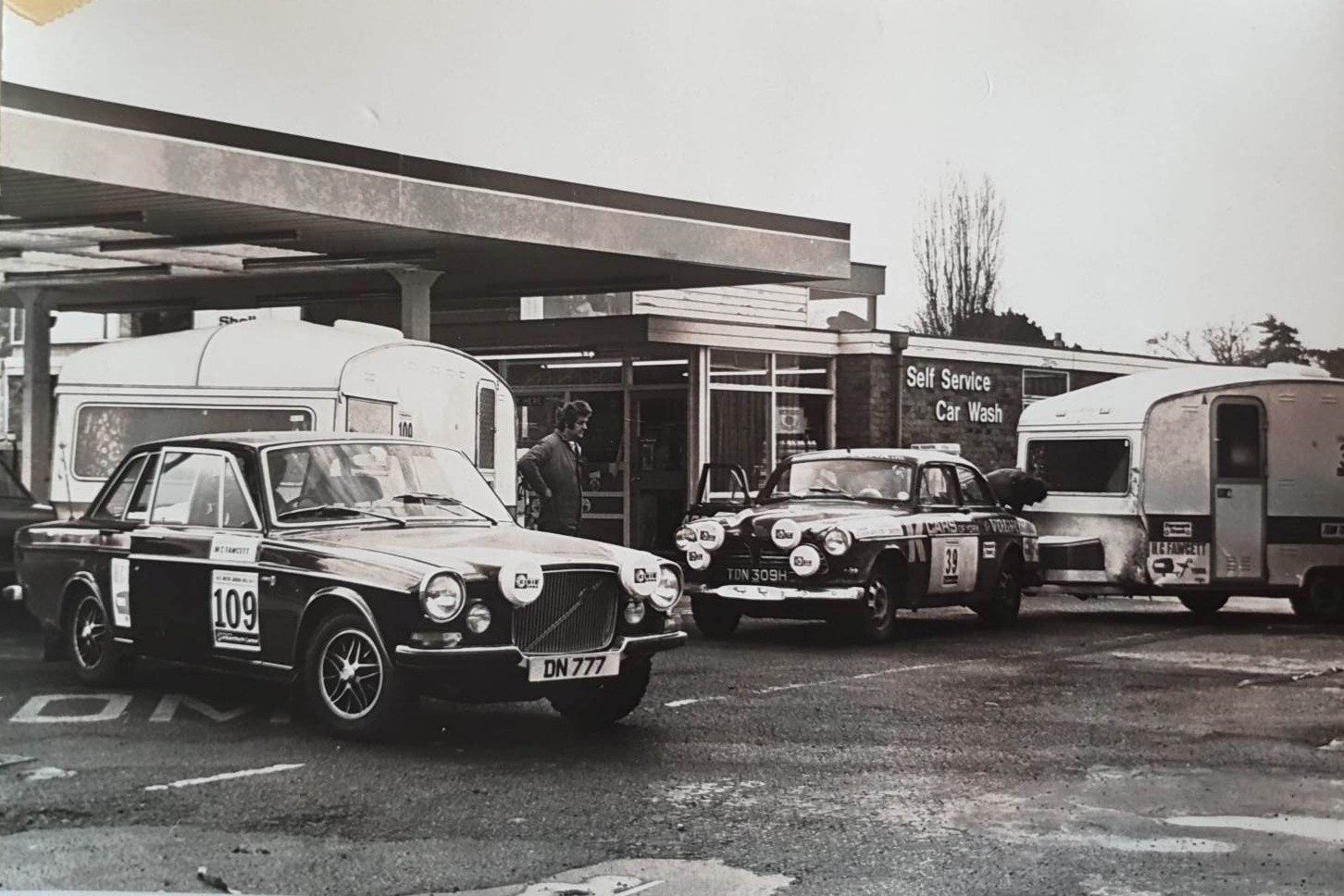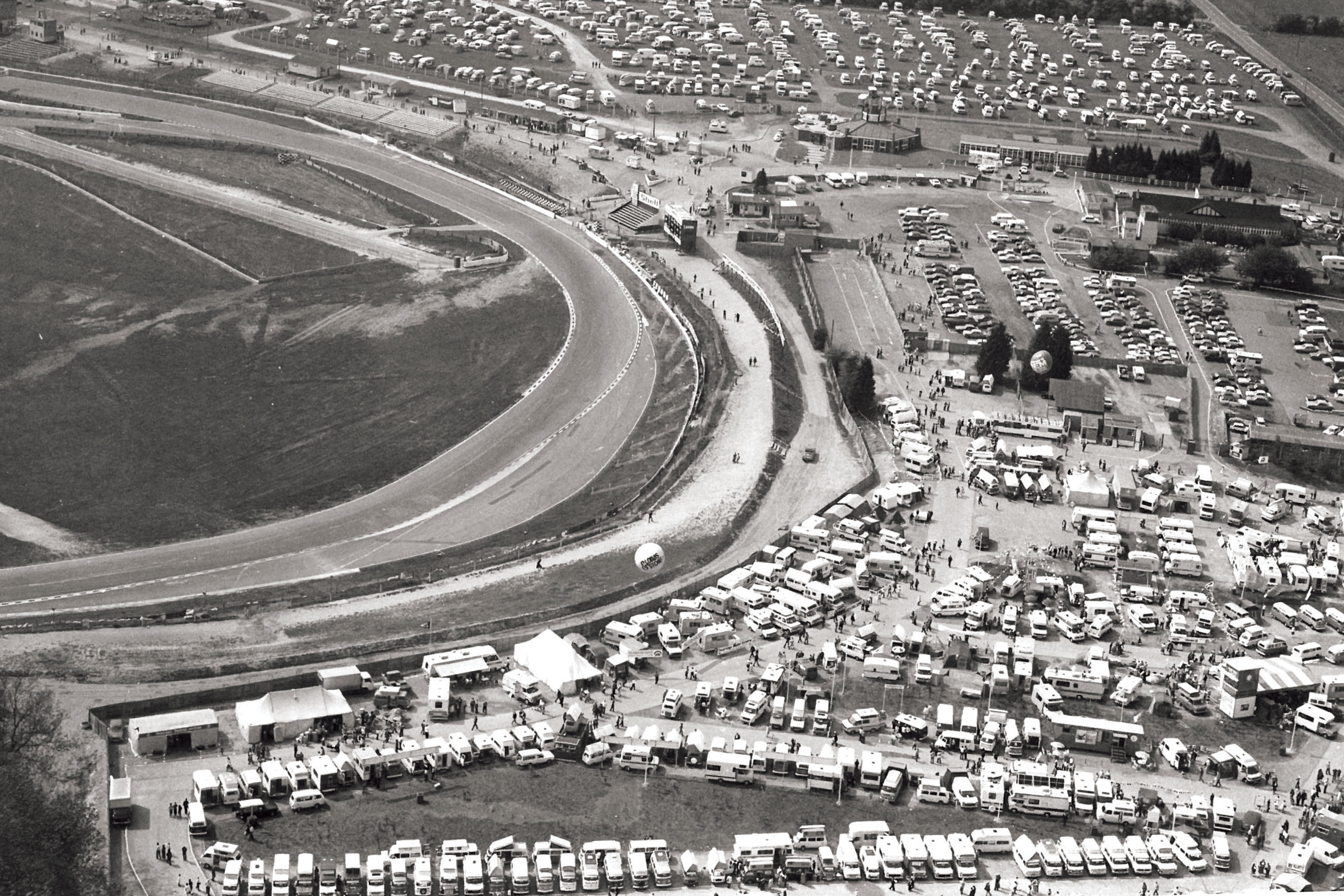1970s Caravan Rallying: Testing The Limits in Speed and Stability

In 1954, the Caravan Club, now known as the Caravan and Motorhome Club, organized the first British Caravan Road Rally. By the 1970s, caravan rallying had become highly popular among caravanners and motorsport enthusiasts. In 1973, my dad, Derek Roberts, began working at Fawcetts Caravan Centre in York. Fawcetts served as Bailey dealers, along with several other brands, and was owned by two brothers, Malcolm and Peter Fawcett. Malcolm actively participated in caravan rallies and had progressed to competing with new Baileys and Volvos by 1973.
Fawcetts collaborated with rally driver Colin Grewer, based in York, who relied on a battle-scarred yet reliable Volvo 123GT rally car. For the 1973 British Caravan Road Rally, Fawcetts formed two two-person teams consisting of Colin and Alan Greenwood, as navigator, driving Colin’s Volvo 123GT and towing a Bailey Mikado, and Malcolm, alongside navigator Chris Knowles-Fitton, with a Volvo 164E and Bailey Maestro. While Colin and Alan showcased impressive driving skills and finished an admirable 13th overall, Malcolm and Chris, unfortunately, retired early due to damage to the car’s suspension caused by a collision with a boulder.

Caravan rallies included off-road forest stages, previously utilized in car rallies like the Lombard RAC Rally. Most caravan manufacturers actively participated in this sport. One competitor quoted: “Once you start the rally, you forget about the caravan and only check your towing mirrors when going through gateposts on a rally stage.” However, rally rules mandated caravans to be equipped with plates, cups, and saucers, and points were deducted for any damage to these items.

Certain rallies incorporated tests conducted at racing circuits. A caravan magazine reported an event at Silverstone Racing Circuit, stating: “The stars of the show were two hairy drivers called Brian Charig and Colin Grewer. Charig in a Ford Mustang GT (and Cavalier caravan) and Grewer in a ‘hot’ Volvo (and Bailey Mikado caravan), who amazed the crowd with a daring dogfight throughout the main race. Grewer’s incredible six-wheel drift as he hurtled through the bends held the growling Mustang at bay. But it was revenge with champagne for Charig, whose power on the straights took him to the trophy by just two yards.”
As time went on, circuit racing developed into an annual championship during the mid-1970s, featuring five rounds held at racing circuits nationwide, attracting crowds of approximately 10,000 spectators per event.

Bailey, in collaboration with Spondon Caravan Centre, sponsored a young racing driver named Andrew Higton. Higton towed a prototype Bailey, featuring a more streamlined bodyshell, behind his Vauxhall VX4/90. Two prototype Baileys were constructed for testing in the championship, attracting more than ten outfits per race from various caravan manufacturers. Unfortunately, one prototype rolled over during the final round of the 1974 Championship, driven by another team member. The remaining prototype Bailey, towed by Andrew Higton, emerged as the outright champion after dominating the leader board throughout the year. Despite its success, the prototype Bailey never entered production.

By the late 1970s, caravan rallying had become highly competitive, leading many caravan manufacturers to hire professional rally drivers such as Roger Clark. Consequently, the increased speed and competitiveness resulted in a higher risk of damage to caravans. As a result, manufacturers began exploring less expensive methods to test their products, such as using computer programs instead of rally stages. Despite these changes, Malcolm Fawcett, and Colin Grewer live on through the joy and excitement that competitive caravan rallying and racing brought to their lives. Their dedication also contributed to improvements in the durability and stability of caravans, which were tested to the extreme in these events.
I currently own a 2016 Bailey Pegasus Verona, which we have owned since 2019. It’s very comfortable and has great build quality.
I would like to express my gratitude to Barbara, the widow of Malcolm Fawcett, as well as his daughter Sarah and son Roger, for providing me with the photos used in this article.
Previous
75 Years and Counting
Latest news & events
See all news & eventsWinchester Caravans & Motorhomes Attending The Sothern Motorhome & Campervan Show
Newbury Showground, Chieveley, Berkshire




